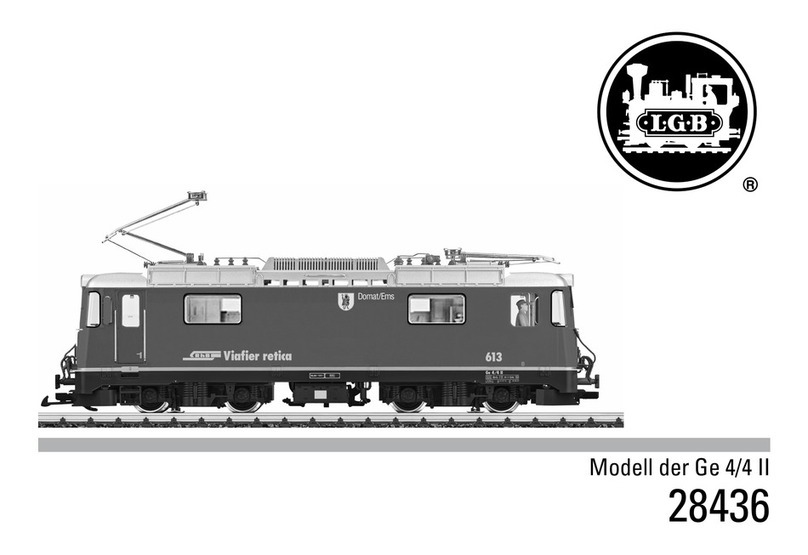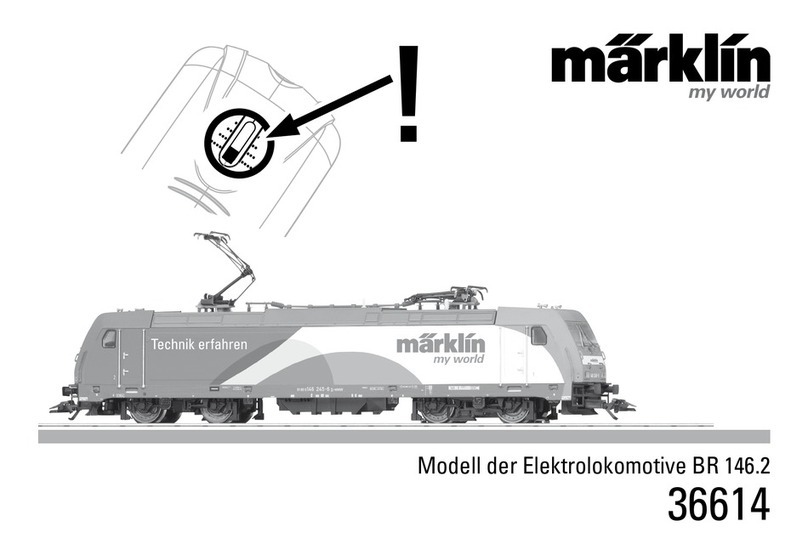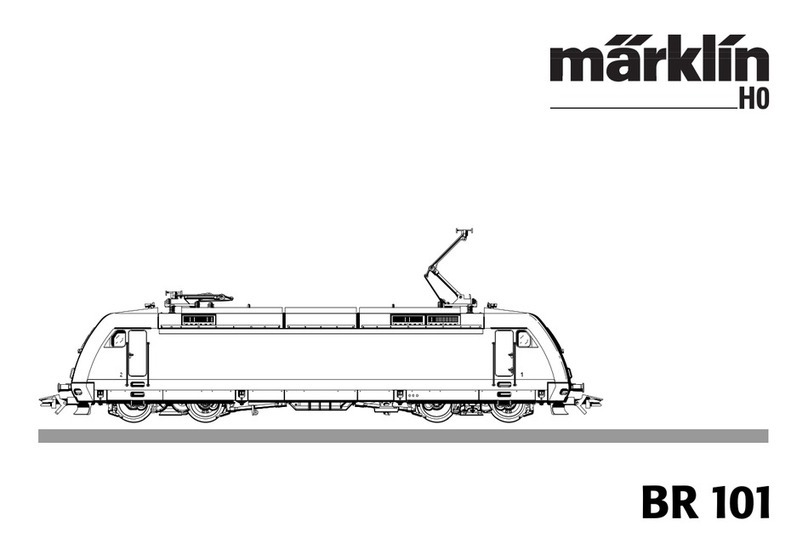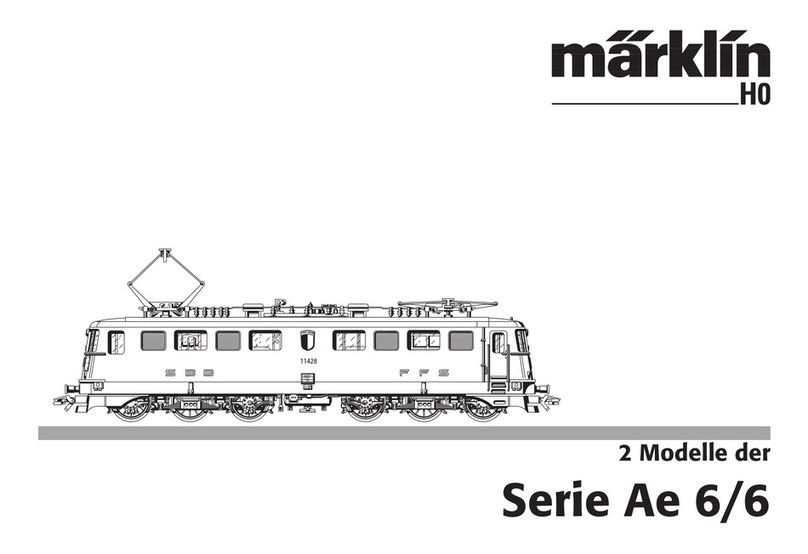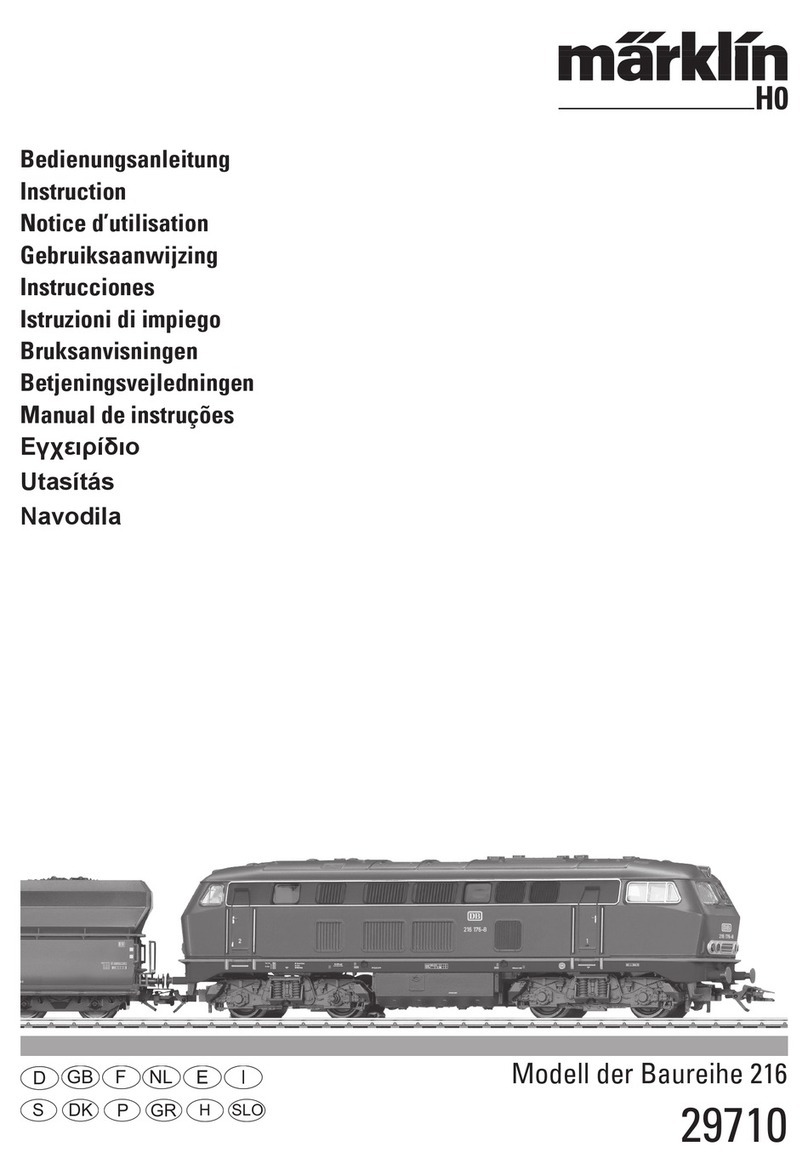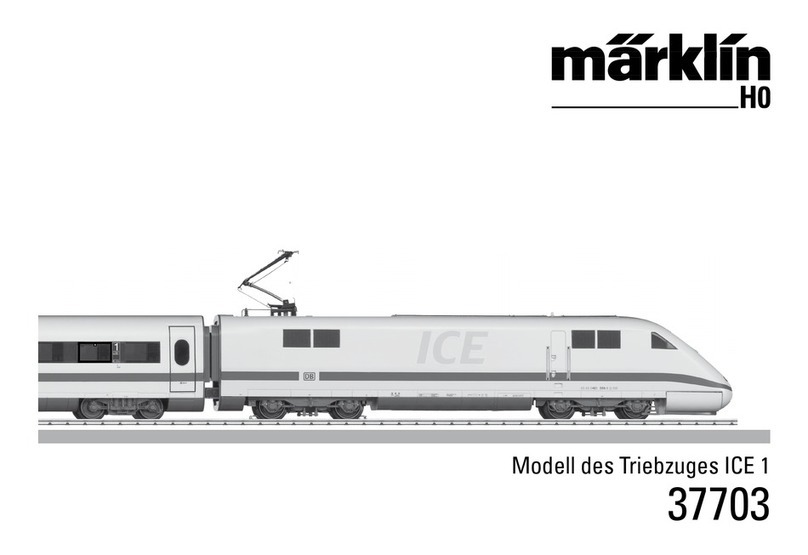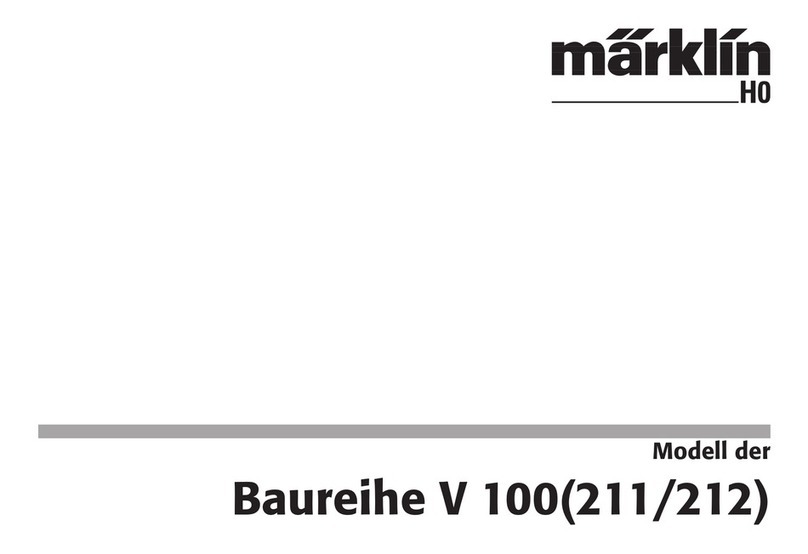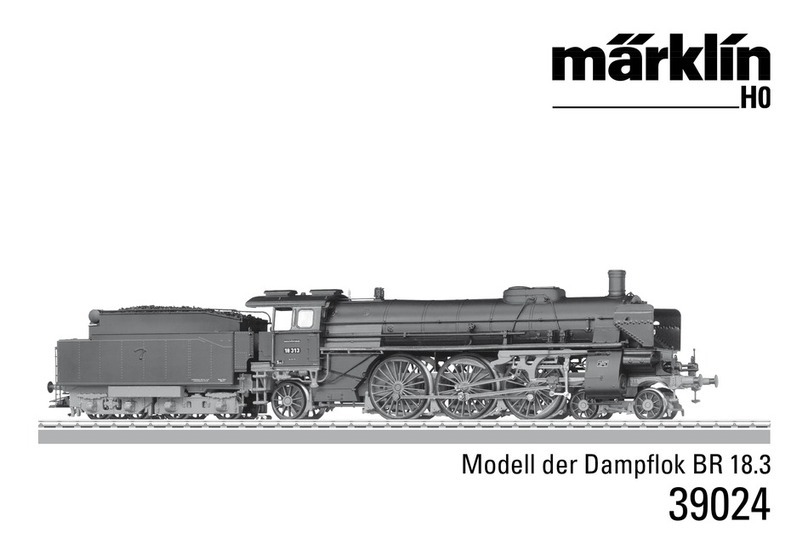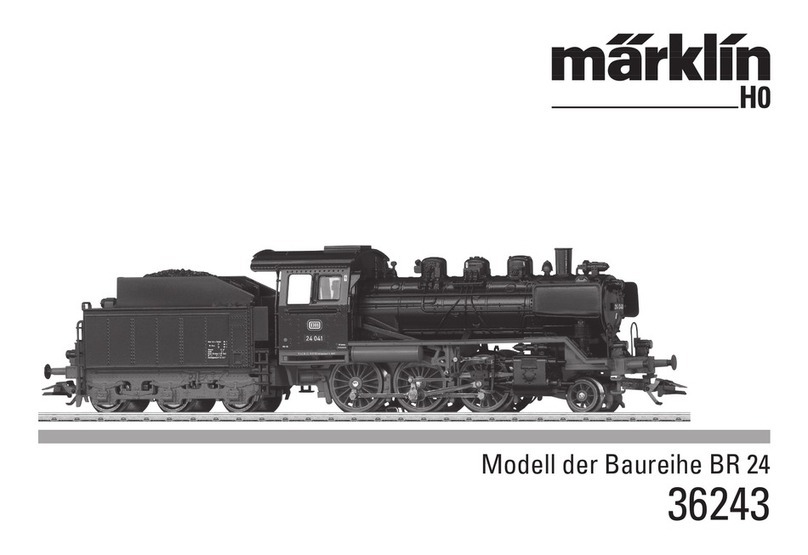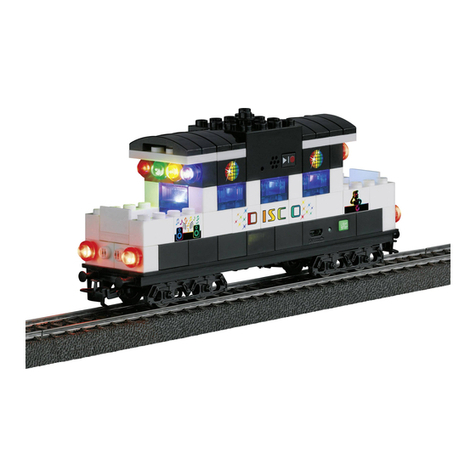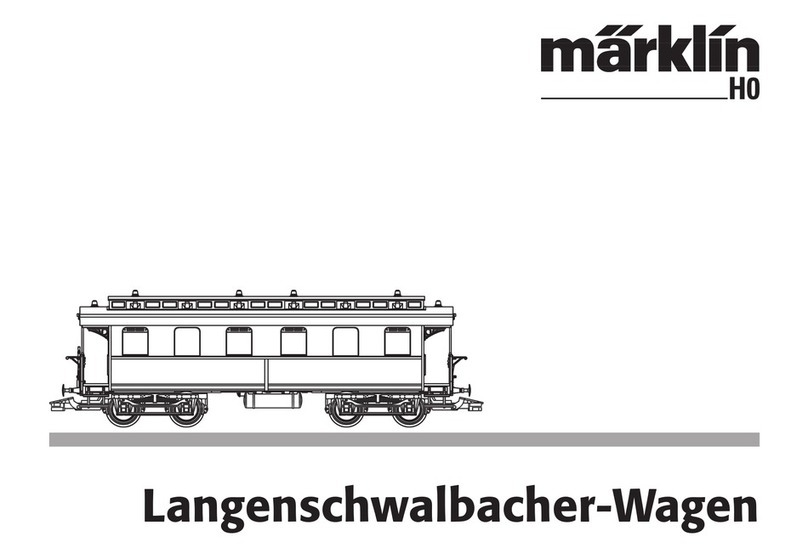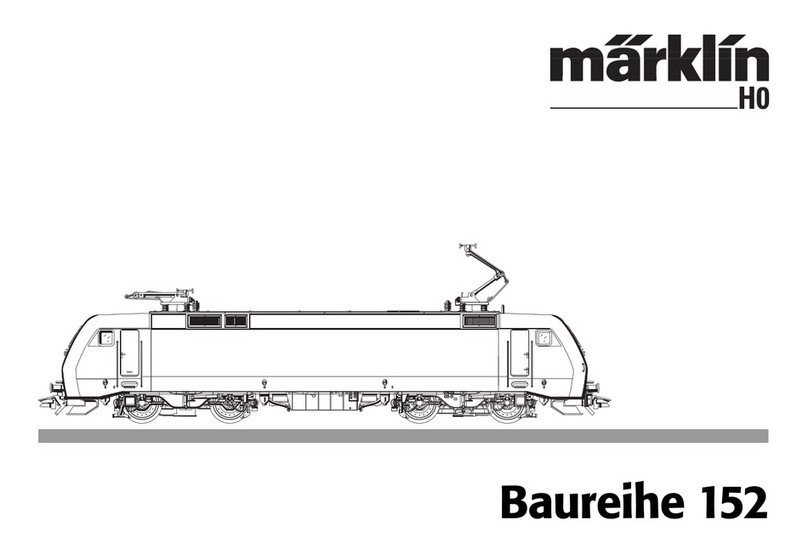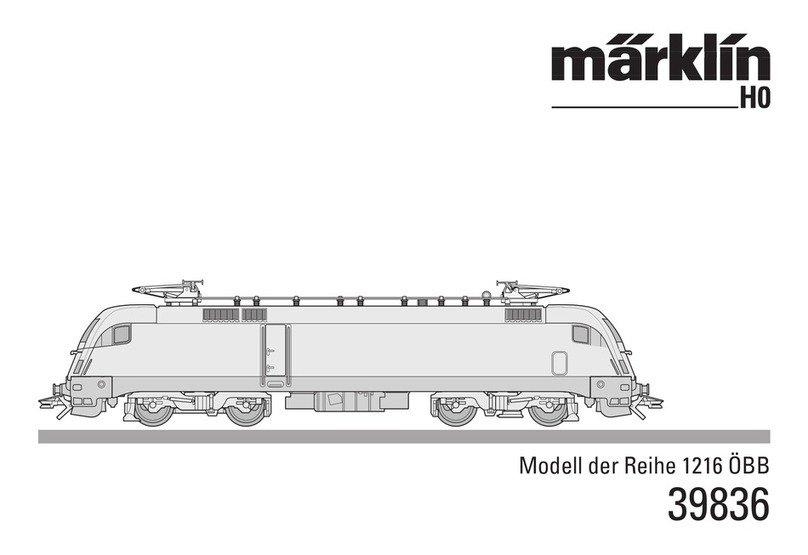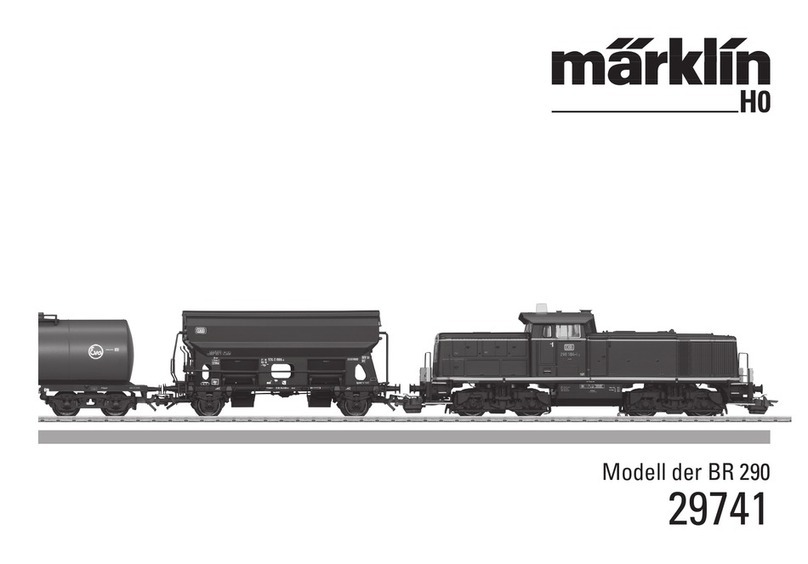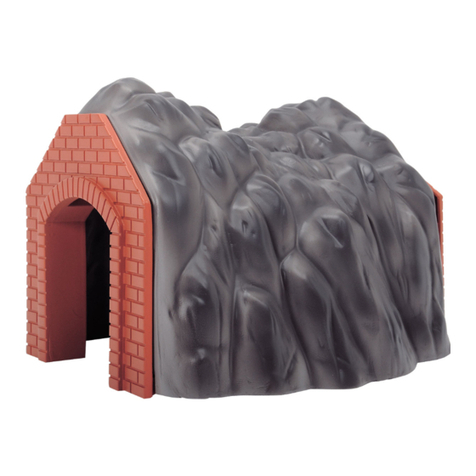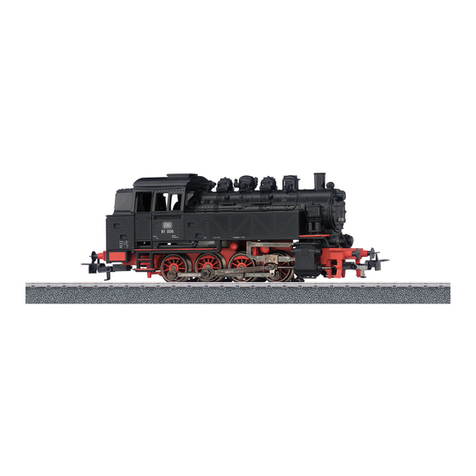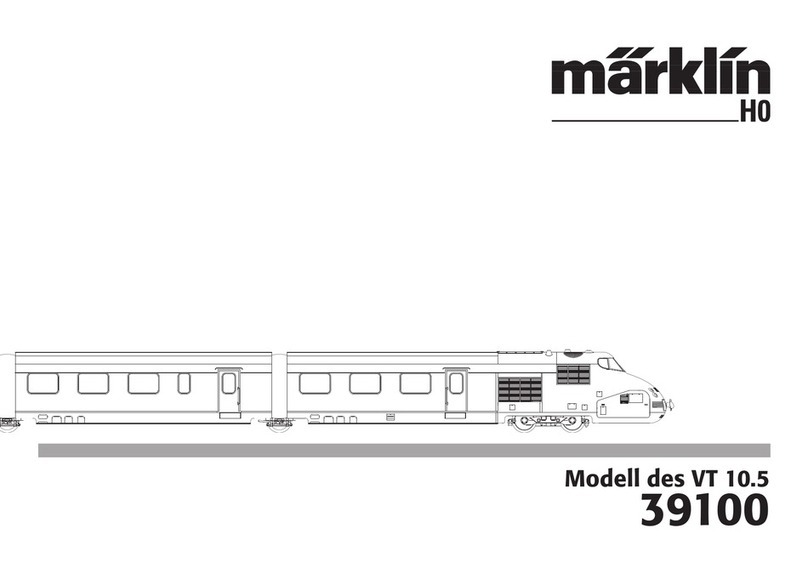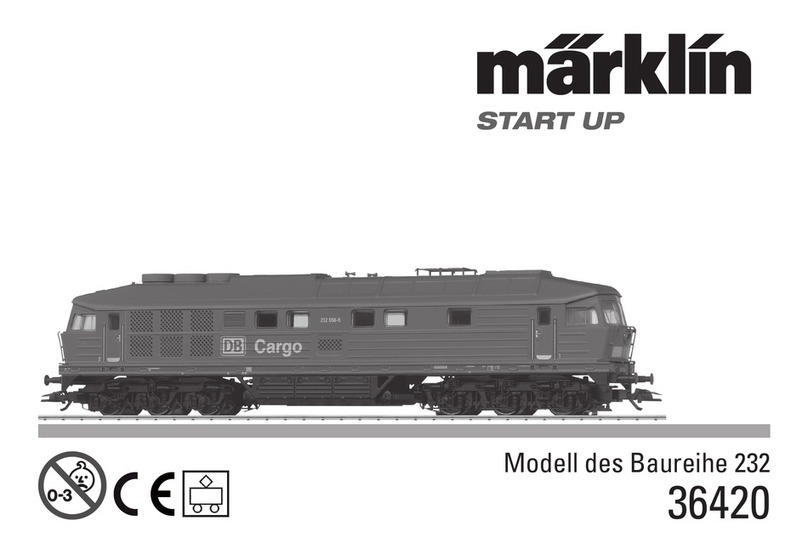
8
Sicherheitshinweise
• nur zur Verwendung in geschlossenen Räumen
• ACHTUNG! Funktionsbedingte scharfe Kanten und Spitzen.
• Verbaute LED`s entsprechen der Laserklasse 1 nach
Norm EN 60825-1.
Allgemeine Hinweise
• Die Bedienungsanleitung ist Bestandteil des Produktes
und muss deshalb aufbewahrt sowie bei Weitergabe des
Produktes mitgegeben werden.
• Entsorgung: www.maerklin.com/en/imprint.html
Funktionen
Die Drehscheibe 74861 ist sowohl bei analogem als auch bei
digitalem Fahrbetrieb einsetzbar. Für den digitalen Betrieb
der Drehscheibe selbst ist ein zusätzliches digitales Steu-
ergerät (mfx, MM oder DCC) notwendig. Ein eigener Span-
nungsanschluss für die Drehscheibe wird nicht benötigt.
Der analoge Betrieb der Drehscheibe (nur mit 72760) ist
allerdings nur eingeschränkt möglich.
Im Auslieferzustand sind 2 x 3 Anschlussgleise vorgesehen.
Mit dem Erweiterungsset 74871 kann die Drehscheibe auf
max. 30 Anschlussgleise (12°-Raster) ausgebaut werden.
Ergänzungen
Die Rand-Segmente der Drehscheibe können beliebig aus-
getauscht werden und lassen somit eine optimale Anpas-
sung an die gewünschte Gleisanlage zu (Randsegment nach
oben aus der Drehscheibe herausheben, Seite 4, Bilder 4).
Mit der Erweiterung 74871 kann die Drehscheibe um weitere
Anschlussgleise ergänzt werden. Diese Anschlussgleise
können auch mit dem Endstück 24001 zu einem vorbildge-
rechten Blindgleis ausgebildet werden.
Der Ringlokschuppen 72886 kann passend neben der Dreh-
scheibe aufgestellt werden.
Die Gleisanschlüsse sind für Märklin C-Gleise vorgese-
hen. Bei Anlagen mit Metall-Gleisen kann als Zufahrt das
Übergangsgleis 24951 verwendet werden, bei Anlagen mit
K-Gleis das Übergangsgleis 24922.
Anschluss
Die Drehscheibe hat einen Anschluss zur Steuerung der
Drehscheibe mit einem digitalen Steuergerät (z.B. Central
Station 2 / 3) sowie einen Gleisanschluss zur Versorgung
des Gleises auf der Drehbühne (S. 2, Bild 1). Die beiden
Schienenprofile haben getrennte Anschlüsse so dass auch
ein Rückmeldedecoder angeschlossen werden kann (S. 5,
Bild 9). Wird dies nicht gewünscht empfehlen wir die beiden
Schienenanschlüsse wie im Bild 1 gezeigt zu verbinden.
Die Anschlussgleise der Drehscheibe werden nur durch
die Gleise auf der Anlage versorgt. Die Versorgung der
Anschlussgleise über die Drehbühne ist nicht möglich.
Aufbau
Die Drehscheibe ist zum versenkten Einbau in der Anlage
vorgesehen. Dazu ist in der Grundplatte eine kreisförmige
Aussparung mit einem Durchmesser von mindestens
288 mm und einer für den Betrieb notwendigen Mindest-
höhe von 38 mm erforderlich (Seite 3, Bild 2). Es liegen 6
Kunststoffwinkel bei, die am Rand der Öffnung befestigt
werden (Seite 3, Bild 3). Die Drehscheibe wird dann auf
diesen Winkeln aufgelegt. Die Winkel müssen so platziert


